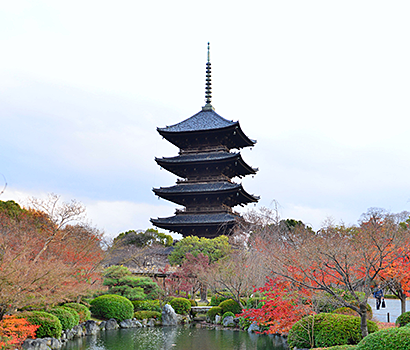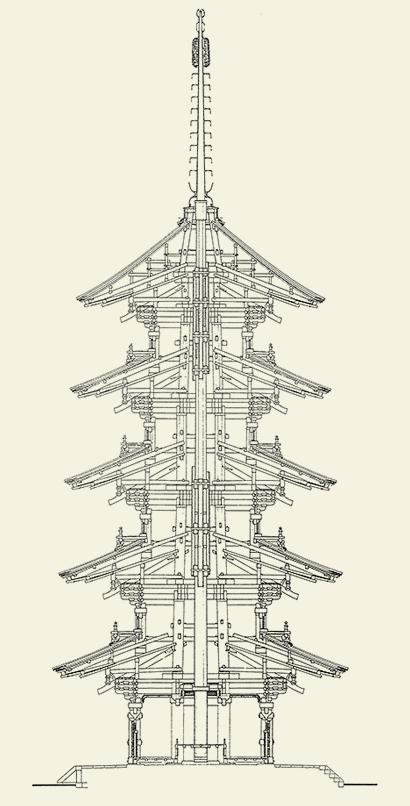Five-Storied Pagoda
A national treasure from the 17th century


The pagoda is a structure used to house relics of the historical Buddha. The pagoda of To-ji is said to be a form of Dainichi Nyorai himself. The inside of the pagoda is normally closed to the public, except for special openings. Four Buddha statues are located on a platform on the ground level of the pagoda surrounding the main pillar. The statues are facing in four different directions and Buddhist pictures and motifs are painted on the pillars and walls.
To-ji's five-storied pagoda is the highest pagoda in Japan, measuring 55m (187 feet). The present pagoda was built in 1644. The first one was built in the 9th century. Since then, the pagodas burned down four times, sometimes after being struck by lightning.
None of the pillars of the pagoda extend into the ground. Rather, they simply stand on stone foundations. Despite this, the pagoda has never been knocked over in an earthquake.
The vibrations caused by an earthquake are absorbed by the interlocked parts of the pagoda and the force of the vibrations is gradually damped as they move to the higher parts of the pagoda. In addition, each level moves independently of the others, in a motion known as the
"snake dance." This further absorbs and dampens the energy of an earthquake. Finally, the pillars surrounding the main supports on each level are short, so that the force tending to return the structure to its original position is greater than the deflecting force, which also prevents the pagoda from collapsing.